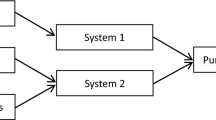Abstract
A number of studies have applied non-market valuation techniques to measure the value of cultural goods. Virtually all of these studies are single case applications and rely mostly on stated preferences, such as contingent valuation techniques. We compare the relative value of multiple, competing goods and show how revealed preferences, in particular travel time, may be used for this. In addition, we account for heterogeneity. Using a unique transaction database with the visiting behavior of 80,821 Museum Cardholders to 108 Dutch museums, we propose a latent class application of a logit model to account for the different distances of museums to the population and for differences in willingness-to-travel.
Similar content being viewed by others
References
Alberini, A., Riganti, P. and Longo, A. (2003) “Can People Value the Aesthetic and Use Services of Urban Sites? Evidence from a Survey of Belfast Residents.” Journal of Cultural Economics 27: 193–213.
Bille, H. T. (1997) “The Willingness-to-Pay for the Royal Theatre in Copenhagen as a Public Good.” Journal of Cultural Economics 21: 1–28.
Bozdogan, H. (1987) “Model Selection and Akaike’s Information Criterion (AIC): The General Theory and its Analytical Extensions.” Psychometrika 52: 345–370.
Corning, J. and Levy, A. (2002) “Demand for Live Theater with Market Segmentation and Seasonality.” Journal of Cultural Economics 26: 217–235.
Cramer, J.S. (2003) Logit Models from Economics and Other Fields. Cambridge University Press, Cambridge.
Cuadrado, M. and Frasquet, M. (1999) “Segmentation of Cinema Audiences: An Exploratory Study Applied to Young Consumers.” Journal of Cultural Economics 23: 257–267.
Epstein, R.A. (2003) “The Regrettable Necessity of Contingent Valuation.” Journal of Cultural Economics 27: 259–274.
Finn, A., McFadyen, S. and Hoskins, C. (2003) “Valuing the Canadian Broadcast Corporation.” Journal of Cultural Economics 27: 177–192.
Forrest, D., Grime, K. and Woods, R. (2000) “Is it Worth Subsidizing Regional Repertory Theatre?” Oxford Economic Papers 52: 381–397.
Frey, B.S. (1998) “Superstar Museums: An Economic Analysis.” Journal of Cultural Economics 22: 113–125.
Green, D.P., Kahneman, D. and Kunreuther, H. (1994) “How the Scope and Method of Public Funding Affect Willingness to Pay for Public Goods.” Public Opinion Quarterly 58: 49–67.
Heckman, J. and Singer, B. (1984) “A Method for Minimizing the Impact of Distributional Assumptions in Econometric Models for Duration Data.” Econometrica 52(2): 271–320.
Hutter, M. (1998) “Communication Productivity: A Major Cause for the Changing Output of Art Museums.” Journal of Cultural Economics 22: 99–112.
Martin, F. (1994) “Determining the Size of Museum Subsidies.” Journal of Cultural Economics 18: 255–270.
McFadden, D. (1974) “Conditional Logit Analysis of Qualitative Choice Behavior”, in P. Zarembka (ed.), Frontiers in Econometrics, Academic Press, New York.
McFadden, D. (1981) “Econometric Models of Probabilistic Choice”, in C. Manski and D. McFadden (eds.), Structural Analysis of Discrete Data with Econometric Applications, MIT Press, Cambridge, MA.
Morey, E. and Rossmann, K.G. (2003) “Using Stated-Preference Questions to Investigate Variations in Willingness to Pay for Preserving Marble Monuments: Classic Heterogeneity, Random Parameters, and Mixture Models.” Journal of Cultural Economics 27: 215–229.
Navrud, S. and Ready, R.C. (2002) Valuing Cultural Heritage; Applying Environmental Techniques to Historic Buildings, Monuments and Artifacts. Edward Elgar, Cheltenham.
Noonan, D.S. (2003) “Contingent Valuation and Cultural Resources: A Meta-Analytic Review of the Literature.” Journal of Cultural Economics 27: 159–176.
Papandrea, F. (1999) “Willingness to Pay for Domestic Television Programming.” Journal of Cultural Economics 23: 149–166.
Pollicino, M. and Maddison, D. (2001) “Valuing the Benefits of Cleaning Lincoln Cathedral.” Journal of Cultural Economics 25: 131–148.
Poor, P.J. and Smith, J.M. (2004) “Travel Cost Analysis of a Cultural Heritage Site: The Case of Historic St. Mary’s City of Maryland.” Journal of Cultural Economics 28: 217–229.
Prietro-Rodríguez, J. and Fernández-Blanco, V. (2000) “Are Popular and Classical Music Listeners the Same People?” Journal of Cultural Economics 24: 147–164.
Santagata, W. and Signorello, G. (2000) “Contingent Valuation of a Cultural Public Good and Policy Design: The Case of “Napoli Musei Aperti.” Journal of Cultural Economics 24: 181–204.
Schwartz, S. (1978) “Estimating the Dimensions of a Model.” Annals of Statistics 6: 461–464.
Thompson, E., Berger, M., Blomquist, G. and Allen, S. (2002) “Valuing the Arts: A Contingent Valuation Approach.” Journal of Cultural Economics 26: 87–113.
Throsby, D. (2003) “Determining the Value of Cultural Goods: How Much (or How Little) Does Contingent Valuation Tell Us?” Journal of Cultural Economics 27: 275–285.
Wedel, M., DeSarbo, W.S., Bult, J.R. and Ramaswamy, V. (1993) “A Latent Class Poisson Regression Model for Heterogeneous Count Data with an Application to Direct Mail.” Journal of Applied Econometrics 8: 397–411.
Wedel, M. and DeSarbo, W.S. (1995) “A Mixture Likelihood Approach for Generalised Linear Models.” Journal of Classification 12(1): 21–56.
Wedel, M. and Kamakura, W. (2000) Market Segmentation. Conceptual and Methodological Foundations, 2nd edn. Kluwer Academic Publishers, Boston/Dordrecht/London.
Willis, K.G. (2002) “Iterative Bid Design in Contingent Valuation and the Estimation of the Revenue Maximizing Price for a Cultural Good.” Journal of Cultural Economics 26: 307–324.
Whitehead, J.C. and Finney, S.S. (2003) “Willingness to Pay for Submerged Maritime Cultural Resources.” Journal of Cultural Economics 27: 231–240.
Author information
Authors and Affiliations
Corresponding author
Rights and permissions
About this article
Cite this article
Boter, J., Rouwendal, J. & Wedel, M. Employing Travel Time to Compare the Value of Competing Cultural Organizations. J Cult Econ 29, 19–33 (2005). https://doi.org/10.1007/s10824-005-5796-2
Issue Date:
DOI: https://doi.org/10.1007/s10824-005-5796-2




